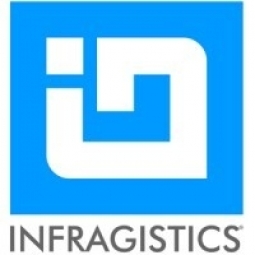Technology Category
- Cybersecurity & Privacy - Intrusion Detection
- Platform as a Service (PaaS) - Application Development Platforms
Applicable Industries
- National Security & Defense
- Telecommunications
Applicable Functions
- Quality Assurance
Use Cases
- Cybersecurity
- Intrusion Detection Systems
Services
- Cybersecurity Services
- System Integration
About The Customer
Sensato is a top-500 cybersecurity innovator based in Red Bank, New Jersey. Founded in 2013, Sensato provides risk assessments, penetration testing, 24x7 security operations, executive guidance, and integrated threat monitoring and detection software. In 2015 and 2016, Sensato was named one of the top 500 most innovative cybersecurity companies in the world. Sensato was also named 2016 Visionary Leader in Cybersecurity by Frost Sullivan. The company's Sensato-Nightingale is an integrated cybersecurity platform that combines detection, monitoring, incident response, deception technology, forensics, countermeasures, and more.
The Challenge
Sensato, a top-500 cybersecurity innovator, was facing a significant challenge in visualizing and making sense of the massive amounts of data captured during a cyber attack. The company's integrated cybersecurity platform, Sensato-Nightingale, combines detection, monitoring, incident response, deception technology, forensics, countermeasures, and more. Once an attacker is detected, Nightingale can automatically launch its Sentinel technology to monitor, track, and report on the attacker’s activities across an organization’s network and enterprise. However, the sheer volume of data generated posed a constant challenge. Ongoing analysis was critical so that strategic security experts could develop more sophisticated protection strategies. The company needed a solution that could simplify analytics and visualizations, making them easy to use and deploy across multiple platforms, and speed up time to market.
The Solution
Sensato chose the Reveal embedded analytics platform to address its data visualization challenges. Reveal is purpose-built to be embedded, making it faster for Sensato to integrate into Sensato-Nightingale. The company could install Reveal anywhere it chose—in the cloud, on the web, desktop, mobile, or on-premise. Sensato didn’t need to integrate its software with a vendor’s proprietary backend, as is required with other vendors. Reveal is also faster because it includes native toolkits for web, desktop, and mobile. This means Reveal visualizations look great on whichever platform they are displayed on, including iOS, Android, web or desktop. The drag-and-drop simplicity of Reveal and its exceptional user experience were also key factors in Sensato's decision.
Operational Impact
Quantitative Benefit

Case Study missing?
Start adding your own!
Register with your work email and create a new case study profile for your business.
Related Case Studies.

Case Study
Vodafone Hosted On AWS
Vodafone found that traffic for the applications peak during the four-month period when the international cricket season is at its height in Australia. During the 2011/2012 cricket season, 700,000 consumers downloaded the Cricket Live Australia application. Vodafone needed to be able to meet customer demand, but didn’t want to invest in additional resources that would be underutilized during cricket’s off-season.

Case Study
SKT, Construction of Smart Office Environment
SK T-Tower is the headquarters of SK Telecom. Inside the building, different types of mobile devices, such as laptops, smartphones and tablets, are in use, and with the increase in WLAN traffic and the use of quality multimedia data, the volume of wireless data sees an explosive growth. Users want limitless Internet access in various places in addition to designated areas.

Case Study
Data Capture for Afghanistan Forces
Electronic equipments on the field of Afghanistan provided information on the status of the vehicle and to identify potential threats surrounding it to the British Force. The monitoring and interpretation of this data requires robust and sophisticated digitization for data capture and communication.










